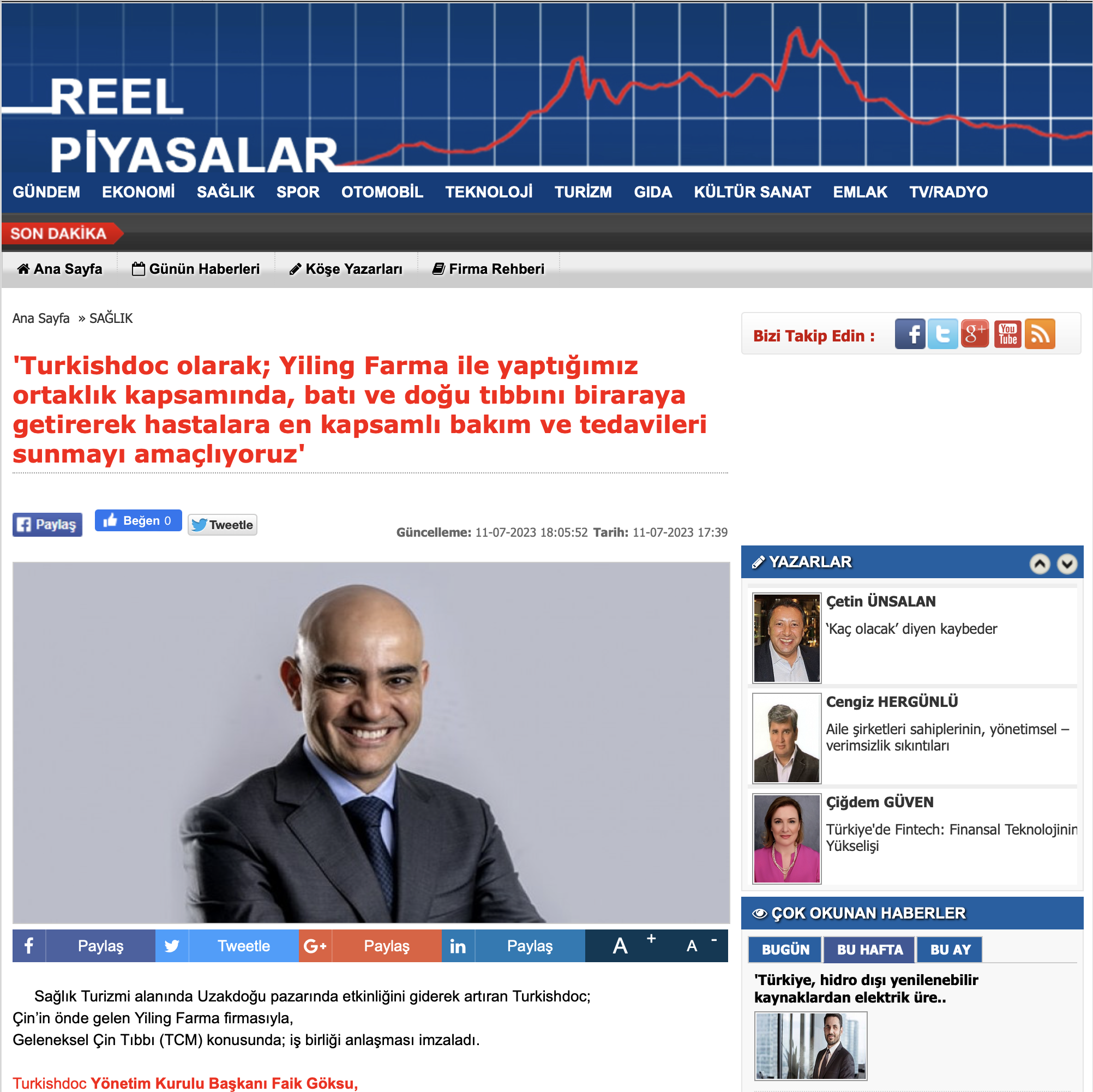Turkishdoc
How Are Cerebrovascular Diseases Diagnosed And Treated?
Neuronal damage caused by ruptured or bleeding brain vessels is called cerebrovascular disease. These diseases, which have many symptoms, are classified into different groups. Ischemic cerebrovascular disease and hemorrhagic cerebrovascular disease are examined in two groups. The most common cerebrovascular diseases are stroke and cerebral hemorrhage. These diseases are important health problems with a high mortality rate around the world. Cerebrovascular diseases, which can occur at any age, are especially common in the elderly. At this point, the treatments for ischemic cerebrovascular disease and hemorrhagic cerebrovascular disease are different. The similarities between these diseases include the need for emergency intervention. Similar symptoms can also be observed between these diseases. The diseases require urgent intervention and necessary treatment.
Diagnosis Of Cerebrovascular Diseases
Going to the hospital following certain symptoms is important for cerebrovascular diseases. Therefore, these diseases need to be diagnosed before they can be treated. For diagnosis, first of all, the patient’s complications are listened to. Then the symptoms are checked, followed by a comprehensive diagnostic procedure. Imaging tests are usually used to make the diagnosis. Here are the methods used to diagnose cerebrovascular diseases:
Cerebral angiography: Cerebral angiography is used as a diagnostic method because the arteries are not visualized on X-rays. In short, this method visualizes the vessels of the brain. As it reveals vascular pathologies, it facilitates the diagnosis of cerebrovascular diseases. The artery is punctured through the groin veins, and the brain vessels of the person are accessed with high-tech devices. In this procedure performed under local anesthesia, the images are monitored with a fluoroscope. X-ray pictures are taken, and the diagnosis is made.
Computed tomography (CT or CAT scan): Computed tomography is used as a diagnostic device for many diseases, including cerebrovascular diseases. This auxiliary method, which can also visualize blood circulation, detects strokes in particular in a short time. However, damage caused by an ischemic stroke may not be visible immediately. CTA (CT angiography) is a method of visualizing blood vessels and is widely used, especially for damage caused by stroke.
Magnetic Resonance Imaging (MRI): MRI, which detects three-dimensional images of body structures, is a helpful diagnostic method for cerebrovascular diseases. Cerebrovascular diseases can be detected with this imaging method, which shows the nerve tissue or the nerve stem in the brain.
Magnetic Resonance Angiogram (MRA): A noninvasive study, MRA is one of the imaging tests used to diagnose cerebrosclerosis. It visualizes the arteries in the head and neck and shows the actual blood vessels. Thus, vascular blockages can be diagnosed with MRA.
Carotid duplex: A noninvasive and painless test, the carotid duplex is a method to help detect problems with blood flow. During this procedure, a gel is applied to the skin and the transducer is activated. Images of the carotid arteries and pulse waveforms are obtained with the carotid duplex method.
Treatment Of Cerebrovascular Diseases
Different treatment methods are applied for cerebrovascular disease. These diseases are treated conservatively or surgically. Depending on the patient, different treatment methods are used. The age of the patient, the type of cerebrovascular disease, and the medical history of the patient are important factors that determine the treatment of these diseases. To remind you again, emergency intervention is very important in these diseases. However, emergency treatment methods differ according to the types of cerebrovascular diseases. Treatment methods applied in ischemic stroke and hemorrhagic stroke are given below:
Emergency treatment for ischemic stroke: If the ischemic stroke has been treated in the emergency room within a short period and the symptoms are caused by clots, clot-dissolving drugs are given. With these medicines, the patient can be completely cured. In the first 6 hours after a stroke, treatment is given to open the blood vessel blockage. Therefore, since stroke is a health problem that requires urgent intervention, it should be treated immediately. Otherwise, it may result in permanent paralysis or death.
Treatment of hemorrhagic strokes: Hemorrhagic strokes can occur due to many causes. These strokes can also occur due to hypertension. Treatments may differ depending on the level and location of the bleeding. However, surgical treatment methods are used for hemorrhagic strokes.
The treatment of cerebrovascular diseases is highly developed today. Different treatments are possible depending on the type of disease, the cause, the severity, and the patient. The types of treatment for cerebrovascular diseases are as follows:
- Carotid Artery Surgery
- Embolization
- Aneurysm Clipping
- Endovascular Aneurysm Treatment
- Microsurgery
Because the treatment methods for the above cerebrovascular diseases are different, they do not apply to everyone. Therefore, the most important factor in their application is what type of cerebrovascular disease has occurred. Important information about the treatments for these diseases is given below:
- Carotid Artery Surgery
Removal of plaque from the artery wall is performed with carotid artery surgery. The main aim of this surgery is to clear blockages in the carotid arteries. Therefore, as a result of the surgery, the blood flow in the brain has been restored. This surgery is also divided into two types: carotid endarterectomy (CEA) and stented carotid artery angioplasty (CAS). Both operations are performed to prevent strokes.
- Embolization
Embolization, one of the blood vessel treatments, is used to treat many types of damage. It is also used to prevent bleeding from wounds and tumor growth. Embolization is also used to prevent blood vessel blockages caused by cerebrovascular diseases.
- Aneurysm Clipping
A ruptured aneurysm can cause a hemorrhagic stroke. This ruptured aneurysm can be treated by clipping. A ruptured aneurysm is treated by inserting a metal clip into the neck of the aneurysm. This prevents the aneurysm from causing a hemorrhagic stroke.
- Endovascular Aneurysm Treatment
Surgery performed inside blood vessels is called endovascular aneurysm treatment. This treatment is also called interventional neuroradiology (INR) and endovascular surgical neuroradiology (ESNR). This minimally invasive surgery is performed with small incisions in a specific area on the leg (the skin over the femoral artery). This treatment method is used to treat blood vessel malformations and aneurysms.
- Microsurgery
Microsurgery is widely used today to treat small and delicate structures in the brain. Special microscopes and instruments are used to detect and repair damage to fine nerves and small blood vessels. They are visualized in high resolution using an operating microscope. This makes the surgery more convenient and successful. Therefore, microsurgery is used to treat brain abnormalities caused by cerebrovascular diseases.











